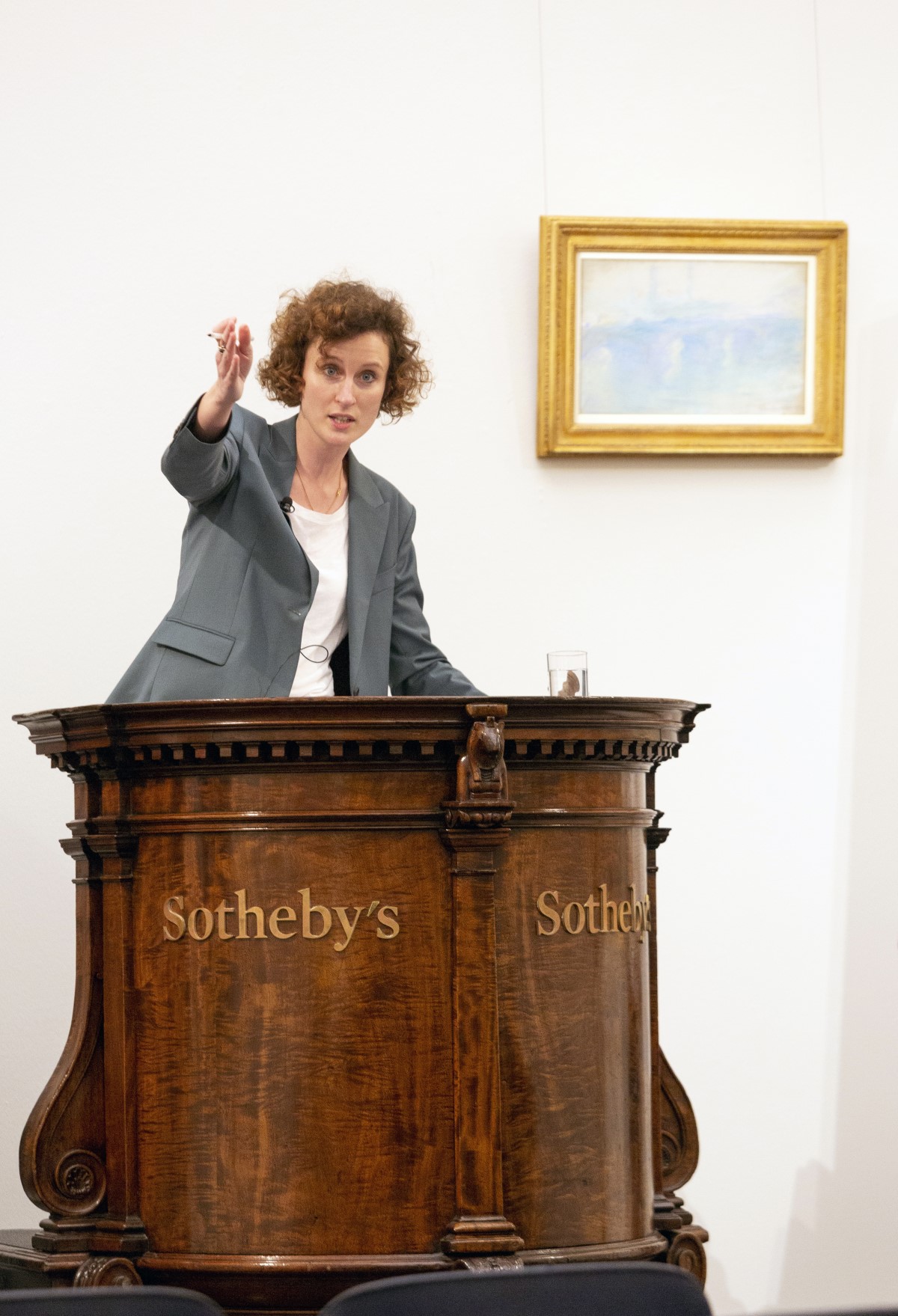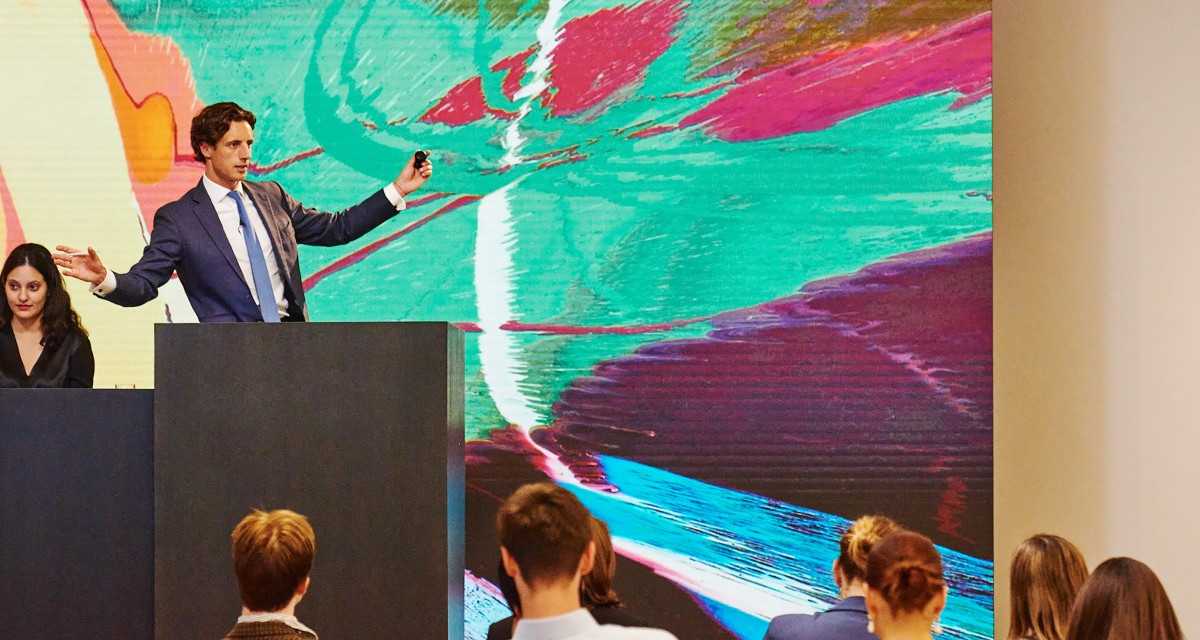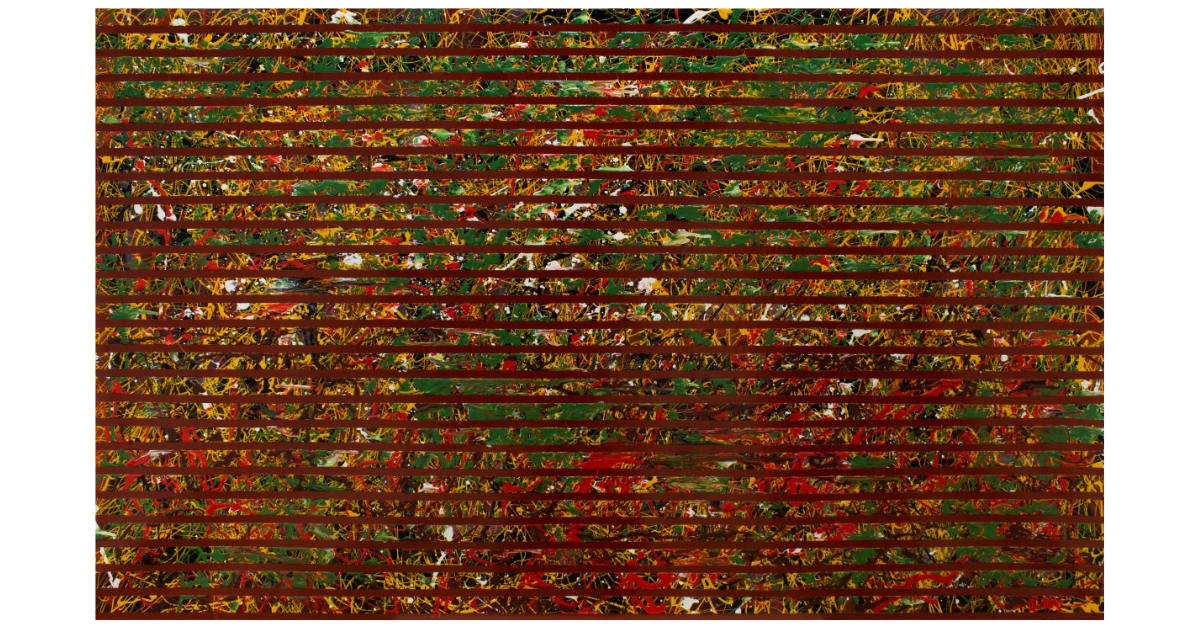What does it take to sell a multi-million pound painting?
Words: Will Moffitt
Mayfair’s auction houses have enjoyed lucrative sales recently with post-war and contemporary artworks sparking frantic bidding wars. We met some of the rising stars of the commercial art world to find out what it takes to sell a multi-million pound painting
Henry Highley, head of Private Sales, Europe, & Principal Auctioneer at Phillips
“I hate the process,” Henry Highley admits when I bring up the subject of his post-auction analysis sessions. “Watching yourself back doing anything is excruciating. Having your personality and your tics and mannerisms critiqued is painful.”
On the outside great auctioneers, like great theatre actors, seem to command a crowd with effortless élan, but it’s those hours of scrutiny that deliver success. Since joining Phillips in 2008, Highley has risen through the ranks of its London 20th Century & Contemporary Art department to become an extremely prolific auctioneer.
The 37-year-old isn’t sure how many auctions he has now presided over as lead auctioneer, but he can still recall his debut sale in 2012. “That was a big responsibility,” he says. “I remember Simon de Pury doing the first half of the auction. He asked me if I was nervous. I said: ‘not at all’. He said: ‘Well I still get very nervous’, which made me feel a bit better.”
Since then Highley has landed some record-breaking sales and become an integral cog in a slick art selling machine. In 2018, he sold Pablo Picasso's La Dormeuse at a London auction for an eye watering £41,859,000. In May 2022, he brought the hammer down on Basquiat’s Untitled in New York for $85,000,000. It contributed to an end of sale sum that currently stands as the highest final sale total in Phillips’s company history.
Highley is immensely proud of these achievements but attributes them to a monumental team effort. He is also quick to dismiss the perception that he’s got it all figured out. In the frenetic world of high octane bidding wars the only thing to be expected is the unexpected.
“I experience something new at every auction, but it's about being confident enough to believe that you're making the right decisions, and to back yourself,” Highley says. “I've had a bidder in the room disappearing across Berkeley Square on a top lot. I've had people waving to a friend and [I thought they were] bidding on a top lot. I've had clients not come in on the phone, when they're absolutely supposed to.”
“You have to improvise,” he adds, “and then make that split decision at the time because it really is the difference between selling a ten plus million pound lot or not selling it.”
Phillips’s principal auctioneer has also had to adapt to a commercial artistic landscape that is being reshaped by new technologies and a younger cohort of collectors who are changing how art is sold and consumed. “The idea of a young collector buying art for many millions wasn’t even applicable back in the early 2000s, whereas now it's pretty normal,” Highley observes.
“Instagram has been the most important kind of change,” he adds. “Not just in the very frenetic sharing of images globally, but the discovery process… these days a young artist can have a show at a gallery, and then explode overnight.”
Holly Braine, Head of Sotheby’s Modern Art Day Sales
“I live vicariously through our clients,” says Holly Braine of her motivations for getting into the commercial art world. “I would love to own the art that we sell, to share my home with Picasso ceramics, Rodin bronzes, Caroline Walker oils. But second best is placing them in other homes that I come to know well through my working relationships.”
As head of the Modern Art Day Sales for Sotheby’s, Braine is accustomed to spending her time lusting over masterpieces. What’s more, she has proved to be extremely good at selling them. After joining in 2012 the art aficionado spent a year rotating around various departments before settling on Impressionist and Modern Art. Here she has been closely involved with the white-glove sales of the Krugier Collection in 2014 and unique ceramics from Marina Picasso in 2015.
Her role covers the consignment and sales of late-19th and 20th century art, from Impressionists through manifold movements – including Fauvism, Cubism, Surrealism – up to Chagall and Picasso in the 1970s and 80s.

Ultimately, the principal job of an auction house, as Braine sees it, is to determine a fair market price for something. Then it's up to the bidders to fight over it. “We can advise on estimates, cultural importance, and on quality, but the ultimate decision on value is publicly thrashed out between competing bidders,” she says. “To me, it’s an extremely important barometer within the art dealership world at large.”
Stephanie Garcia, head of Sale, First Open: Post-War & Contemporary Art Online at Christie’s
Stephanie Garcia opts for Louise Bourgeois's Maman when I ask her which artwork she would most like to own. The spindly and imposing black spider sculpture has enchanted and terrified art lovers the world over, and if Garcia had the money and the space it would take pride of place in her home. “It looks absolutely terrifying, but it's a tribute to her mother,” Garcia explains. “It embodies strength, and fragility. I think it's very special.”
After seeing an exhibition of Bourgeois’s work during a family holiday abroad, Garcia was so taken with the late French Surrealist that she has been “completely committed” to a career in art ever since. After stints interning at Luhring Augustine Gallery in New York and Mayfair’s much-loved Gagosian Gallery, Garcia joined Christie’s Post-War and Contemporary department in 2018.
As head of sale at Christie's first open online auctions her remit spans works from established names including George Condo and Tracey Emin to bright young stars like the American-Ivorian artist Aboudia. Kicking off the very first new season sales, it's a concept that offers more affordable works by emerging artists alongside pricier pieces by Emin and co. This makes for a variable job that encompasses everything from researching and valuing artworks to helping with shipping and cataloguing; liaising with clients – digitally and in person – and taking bids over the phone.

Asked how new technologies have impacted the auctioneering process Garcia cites live stream bidding as an important concept that developed during the pandemic, changing how live auctions are conducted, with telephone bids coming in from Hong Kong, Paris and New York simultaneously. “That was very new for us,” Garcia says. “It’s an incredible tool for accessing international audiences and engaging visitors to partake in the telephone bidding.”
Separate online auctions, like First Open, which are active for longer periods, have also encouraged prolonged bidding wars. “You'd think that people would [mostly] bid early on and keep betting, but all the action really takes place in the final 24 hours,” Garcia explains. “That has really driven the kind of record-breaking prices that we’ve seen within the online sales [segment].”
Garcia is particularly passionate about promoting the talents of emerging artists such as Danielle Orchard, Sarah Slappey, and Karyn Lyons. She also talks excitedly about Aboudia, who smashed auction records in the post-war and contemporary art day sale this summer selling a work for £400,000. “There was a round of applause in the salesroom when that happened,” Garcia says. “That was electrifying.”








